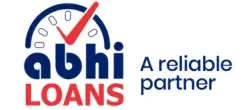What is a line of credit and how does it work?
A line of credit (LOC) is a versatile financial tool that provides borrowers access to a set amount of money they can draw from as needed. Unlike a traditional loan, where the borrower receives a lump sum upfront, a line of credit allows funds to be withdrawn incrementally, repaid, and redrawn as long as the account remains open.
This flexibility makes it a popular choice for individuals and businesses to manage cash flow, handle emergencies, or fund ongoing expenses. This article explores the concept of a line of credit, its various types, how it works, and its advantages and disadvantages.
Understanding a Line of Credit
In simple terms a line of credit is essentially a loan that renews, borrowers have a credit limit, the maximum amount they can borrow at any given time. The borrower is only required to pay interest on the funds they use, not the entire credit limit.
Once repaid, the funds become available for use again, similar to a credit card. LOC are generally unsecured, meaning no collateral is required. However, some lines of credit, such as (HELOCs) home equity lines of credit, are insured by assets like property.
Types of Lines of Credit
There are several types of lines of credit tailored to meet different financial needs:
- Personal Line of Credit – Offered by banks or credit unions, a personal LOC is an unsecured credit line meant for individual use. It can be used for various purposes such as home renovations, medical expenses, or consolidating debt.
- Business Line of Credit – Designed for businesses, this LOC helps manage working capital, handle seasonal fluctuations, or finance short-term projects. It can be either secured or unsecured, depending on the lender and the borrower’s creditworthiness.
- Home Equity Line of Credit (HELOC) – A HELOC is secured against the borrower’s home equity. The credit limit depends on the value of the home and the amount owed on existing mortgages. It is often used for large expenses like home improvements or education.
- Credit Card Line of Credit – Credit cards are essentially a form of revolving credit. They come with a set credit limit and are widely used for everyday expenses.
- Overdraft Line of Credit – Linked to a checking account, an overdraft LOC allows users to withdraw more money than their account balance, ensuring payments are not bounced.
How a Line of Credit Works
A line of credit works as a flexible borrowing option that helps businesses and individuals secure funds up to a predefined limit given by the lender. To get one, borrowers have to apply for one and undergo an evaluation of their creditworthiness, income, and financial history. The lender also decides the value of the collateral for a secured line of credit.
After receiving the approval the lender provides a credit limit to the borrower based on the financial profile which represents the maximum amount that they can borrow. When needed the borrowers can withdraw the funds through different modes such as checks, online transfers and linked accounts.
The Interest rates can be generally fixed or variable, and they are only applied to the amount that was withdrawn, not to the entire credit limit. The principal and interest that has grown are usually included in repayments, which reduces the remaining amount and rebuilds the available credit.
Due to a line of credit that is ongoing, borrowers can reuse the funds again after it has been paid back, making it a flexible financial tool for handling regular or unexpected expenses. This cycle of borrowing and repayment can go on as long as the agreement remains active and the borrower meets the lender’s conditions.
Key Features of a Line of Credit
- Flexibility: As long as borrowers pay the minimum payment conditions, they are free to borrow money as needed and repay it whenever they choose.
- Interest-Only Payments: In the short term, interest-only payments are a cost-effective choice because many credit lines let them during the withdrawal period.
- Renewable Credit: Lines of credit are renewable, in comparison to traditional loans. The funds can be used again without having to reapply after repayment.
- Variable Interest Rates: Most LOCs come with different interest rates, which fluctuate based on market conditions. Repayment costs may be impacted by this.
- Draw and Repayment Periods: LOC has two periods: a draw period, when money can be borrowed, and a repayment period, when only repayments are allowed.
Advantages of a Line of Credit
- Convenience: LOCs provide a readily accessible source of funds, making them ideal for emergencies or unplanned expenses.
- Cost Efficiency: Since interest is charged only on the borrowed amount, lines of credit can be more economical than lumpsum loans.
- Revolving Access: Borrowers can reuse the credit limit repeatedly, making it suitable for ongoing financial needs.
- Versatility: Funds from a line of credit can be used for various purposes, from covering medical bills to financing business growth.
Disadvantages of a Line of Credit
- Higher Interest Rates: Due to lack of collateral Unsecured LOCs often come with higher interest rates than secured loans.
- Variable Rates: Changing interest rates can lead to unexpected repayment costs.
- Potential for Overspending: Due to the ease of access to funds that can tempt borrowers to overspend, leading to financial trouble.
- Fees and Penalties: A lot of LOCs come with fees for maintenance, overdrawing, or early repayment.
When to Use a Line of Credit
A line of credit is a dynamic financial tool that can be used in various situations to manage financial needs effectively. Managing the cash flow is one of the main uses of a line of credit.
For individuals or businesses with inconsistent income sources, a line of credit provides an effective safety net. It helps borrowers to cover essential expenses during hard times, ensuring that their financial commitments are met even when income is stable.
Another important benefit of a line of credit is its power to control emergencies. Whether it’s unavoidable medical expenses, unplanned property damage, or urgent vehicle repairs, a LOC provides quick access to funds.
This financial flexibility can be a lifesaver when critical expenses come up, enabling borrowers to address the problem without undue stress. Lastly, a loc can be an effective tool for debt consolidation. Borrowers can use the funds from an LOC to pay off high-interest debts, such as credit card balances.
By consolidating multiple debts into a single, lower-interest repayment plan, they can simplify their financial management and reduce overall borrowing costs. Using this strategy can help borrowers regain control of their finances and work towards a more stable financial future.
Tips for Using a Line of Credit Sensibly
- Borrow Responsibly: Use the funds only for emergency expenses and don’t overextend your credit.
- Track Interest Rates: Keep an eye on fluctuating interest rates and adjust repayments accordingly to minimize costs.
- Repay Promptly: Keeping your credit score high and avoiding interest accumulating are the benefits of making timely payments.
- Review Terms: Understand the terms, including fees, repayment schedules, and penalties, before opening a LOC. Make sure you understand the terms and conditions, including fees, payback terms, and penalties, before creating a line of credit.
Conclusion
LOC is a financial tool that helps borrowers to access funds when needed. It helps close financial gaps for individuals and businesses, offering a renewable source of credit. It has many benefits, such as cost efficiency, and convenience but it also requires careful use to avoid overspending or debt accumulation.
Borrowers can make the most of this financial tool to meet their immediate and long-term fund needs by understanding how a line of credit works and using it effectively. A line of credit can be a useful tool for managing cash flow, crises, or specific projects when facing any financial problems.

